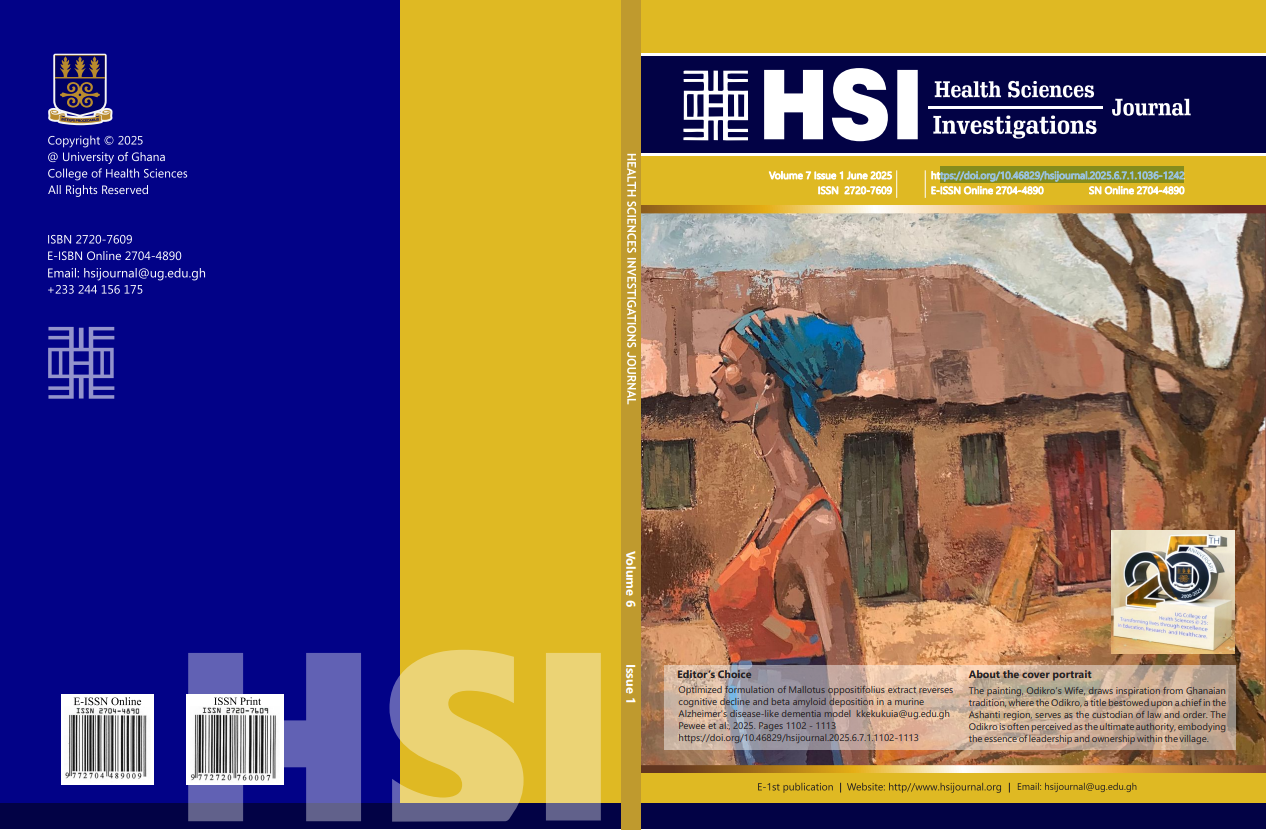Extract of Mallotus oppositifolius ameliorates mercuric chloride-induced neurotoxicity
Extract of Mallotus oppositifolius Ameliorates Mercuric Chloride-Induced Neurotoxicity
Abstract
Background: Mercuric chloride (HgCl2) induces neurotoxicity in both animals and humans, with unclear treatment mechanisms and associated side effects. Mallotus oppositifolius leaf extract, known for its pharmacological properties like antidepressant and anti inflammatory effects, thus suggests potential neuroprotection.
Objective: The study aimed to assess the neuroprotective effect of Mallotus oppositifolius in a mercuric chloride-induced neurotoxicity mouse model.
Methods: Male mice (20 - 25 g) from the Institute of Cancer Research (ICR) were randomly divided into six groups of eight (48 mice). Group 1 received the vehicle (without mercuric chloride) throughout the experimental period. Mice in groups 2, 3, 4, 5 and 6 were pre-treated with HgCl2 orally for 7 days, after which groups 3, 4 and 5 were treated with the oral graded dose of Mallotus oppositifolius leaf extract (MOE 10, 30, 100 mg/kg) while group 6 was treated with the reference drug, piracetam (PCT 150 mg/kg, orally). The various groups were evaluated for neurotoxicity using the open field, catalepsy and novel object recognition (NOR) tests. Cresyl Violet staining was used to assess the neurohistological changes caused in the hippocampus of the brain.
Results: HgCl2-induced catalepsy and decreased posture correction time compared to the vehicle group. However, MOE and PCT significantly reversed this effect. In the novel object recognition (NOR) test, HgCl2 reduced the recognition index and novel object time, while MOE and PCT increased both. Locomotor activity, assessed through line crossing, was significantly reduced with HgCl2 but remained unaffected with
MOE and piracetam. HgCl2 also reduced time in the central compartment, while MOE and PCT reversed this effect. Neurohistological assessment revealed HgCl2-induced reductions in neuronal count in cornu ammonis areas 1 and 3 (CA1 and CA3) and the dentate gyrus (DG) regions, with varied effects observed in MOE- and PCT-treated groups.
Conclusion: This study demonstrates the neuroprotective effect of Mallotus oppositifolius against mercuric chloride-induced neurotoxicity in mice. The leaf extract may have potential in clinical conditions characterised by neurodegeneration.


